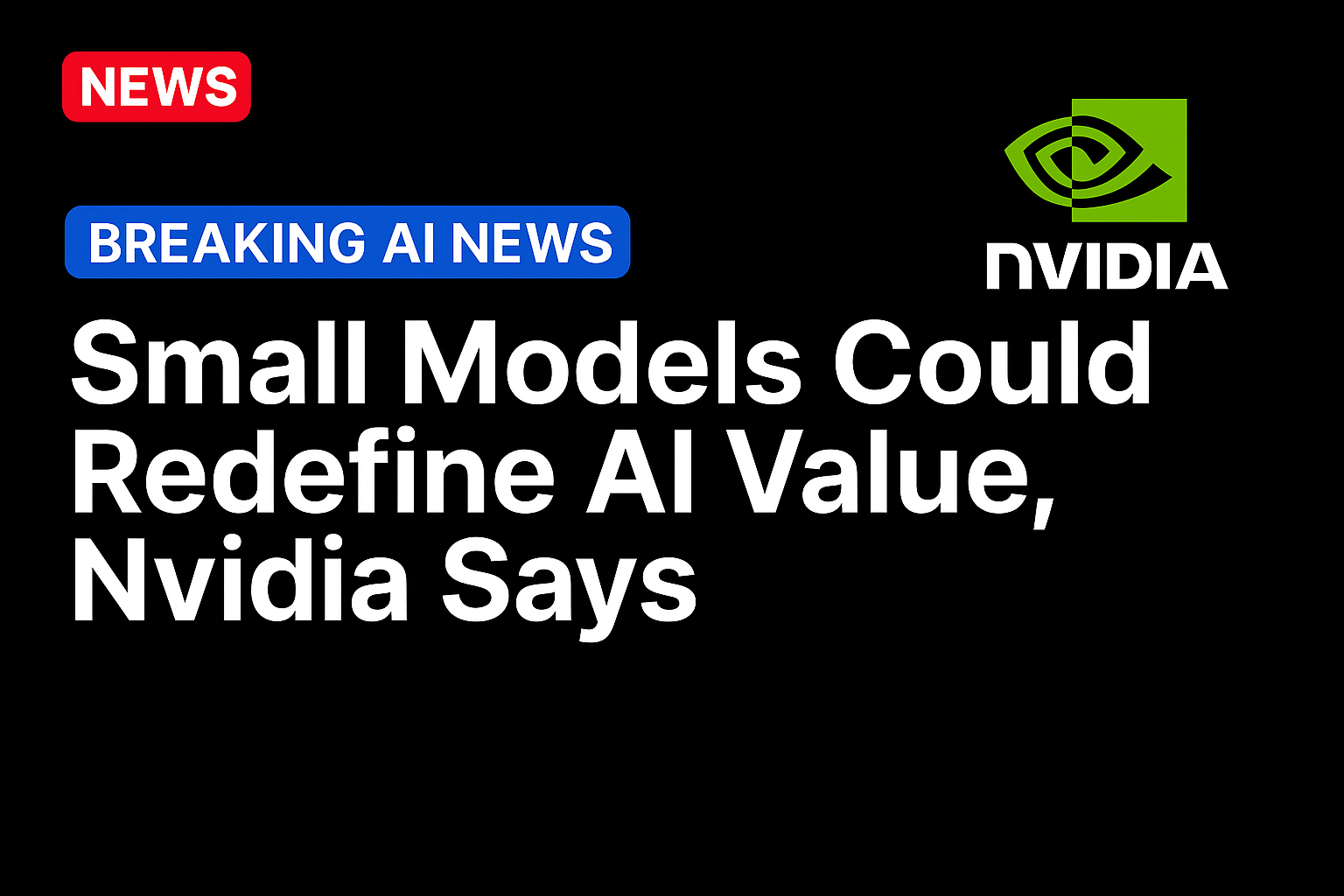
AI’s future may not belong solely to the giant models that grab headlines with trillion-parameter counts. Nvidia’s latest research makes the case that small language models (SLMs) could prove more practical and more profitable in the enterprise. The argument is straightforward: SLMs are powerful enough for many real-world tasks, cost less to run and can be deployed at scale without the same infrastructure burden as large language models (LLMs).
The research offers both a technical framework and a business case. Its central claim is that in systems where AI agents string together multiple steps to complete complex assignments, the bulk of the work doesn’t require the heaviest possible model. Instead, smaller models can handle most of the load, reserving LLMs for rare, high-stakes steps.
Why Small Models Could Be Big Business
Nvidia introduces a conversion algorithm that rethinks how enterprises deploy artificial intelligence. Instead of sending every request to a heavyweight LLM, the system routes repetitive tasks such as document parsing, summarization, data extraction and draft generation to SLMs. LLMs are reserved for complex reasoning or edge cases. For executives, this matters because AI expenditure is under sharper scrutiny. As PYMNTS has reported, CFOs are increasingly demanding that every AI dollar show a clear return.
The appeal of SLMs is cost and speed. Global AI infrastructure spending by Big Tech is projected to exceed $2.8 trillion through 2029. Running a large model demands high compute, often requiring access to scarce GPU clusters and driving up cloud bills. Smaller models can operate on modest hardware, even on premises, cutting operating expenses and latency. This efficiency enables scalability. A bank could deploy many SLMs to monitor transactions continuously, escalating only ambiguous cases to an LLM. Healthcare or insurance departments could use SLMs to process standard forms, turning to LLMs only for complex ones.
To illustrate, Nvidia introduced its Hymba line of SLMs with a hybrid design that balances precision with efficiency. The Hymba-1.5B model, with just 1.5 billion parameters, has been shown to perform competitively on instruction-following benchmarks at lower infrastructure cost than larger frontier models. For business leaders, the key takeaway is not the architecture but the economics; smaller models are now capable enough to handle professional tasks without the infrastructure burden that has limited LLM adoption.
The Tradeoffs and the Test Ahead
Nvidia does not claim SLMs are flawless. They still struggle with tasks requiring deep context or broad knowledge, and they are not immune to hallucinations or misinterpretations. But the economic framing is key. If SLMs can complete 70% to 80% of routine steps cheaply and reliably, and LLMs backstop the rest, the ROI profile for enterprises improves. The hybrid model is not about eliminating error but about routing work to reduce exposure and optimize cost.
For executives weighing AI budgets, Nvidia’s research reframes the question from which large model to choose to how much of the workflow can shift to smaller, cheaper models without losing quality. If Nvidia’s thesis holds, enterprises could evolve toward architectures where SLMs handle most routine work and LLMs act as fallbacks. That shift would redefine how organizations design AI systems and how they measure value.
Source: https://www.pymnts.com/




